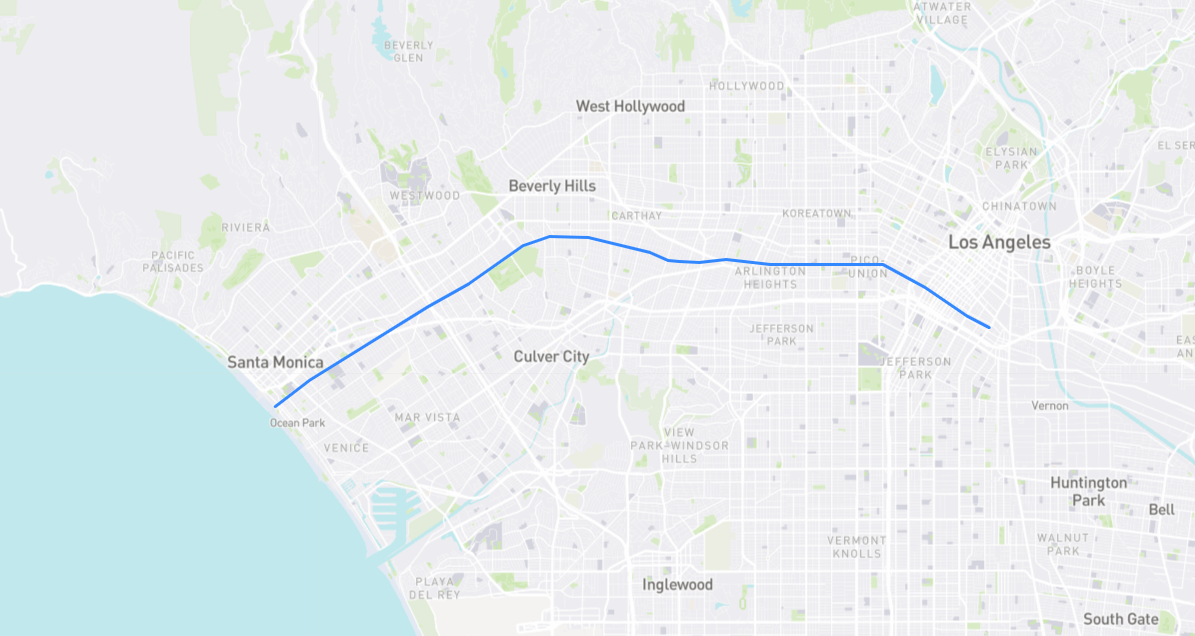Los Angeles never had an unlucky 13th Street: by 1855 (most likely 1853), the street following 12th was dubbed Pico Street, after local celebrity Pío de Jesus Pico (1801-1894). Born at Mission San Gabriel, Pico – a man of Spanish, Native American, and African heritage – inherited the elite status of his father, a soldier in the Spanish army. This allowed him to sweep up massive amounts of land and livestock across Alta California, native rights be damned. Pico enjoyed political power as well: he served as Alta California’s last governor before the Mexican–American War ended his reign in 1846. While in office, he leased out most of the San Fernando Valley to his brother Andrés, who later bought half the Valley from Eulogio de Celis… only to sell it back to Pío himself. (Got all that?) In 1869, Pico sold that same land to Isaac Lankershim in order to finance his luxury hotel “Pico House” near the old plaza. (The building still stands today.) Alas, gambling debts and real estate swindles would leave the aging Pico penniless. His hacienda in Whittier is now a State Historic Park. As for his namesake thoroughfare, Pico Street became Pico Boulevard in 1914. When it was extended out to Santa Monica in 1917, it took over the Westside’s Fremont Avenue – a funny sort of payback, given that John C. Frémont had defeated Andrés Pico in the Mexican–American War.
Find it on the map:

